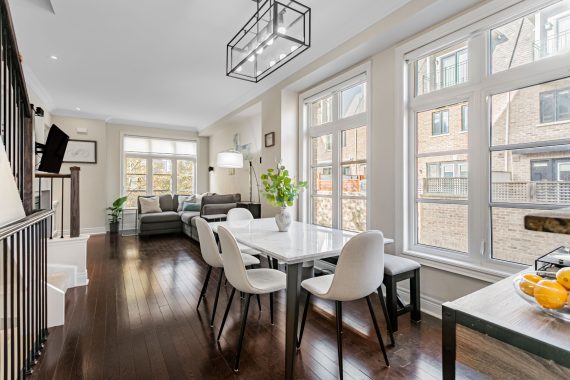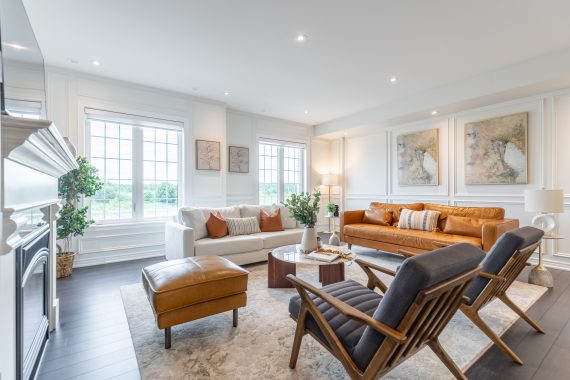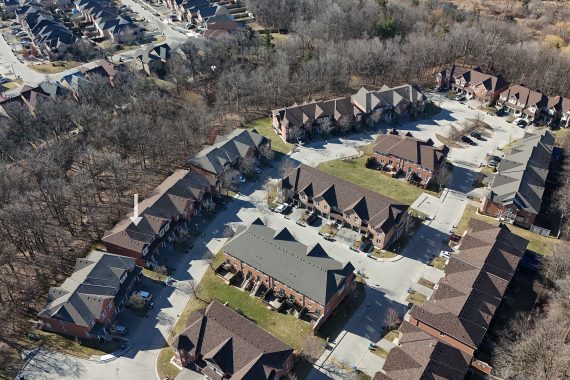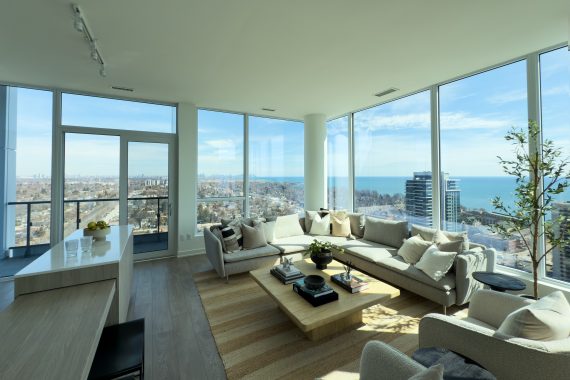Ensuring long term client success is one of our most important principles and therefore we take great care in which products we recommend. Here we’ll explore two different examples for two separate clients who’ve retained our services. The goal is to show the details which go into making real estate product recommendations, to provide examples of potential appreciation and possibly invoke some ideas when reading this. We’ll provide figures and points of detail pertaining to the transactions, however due to our privacy stance for clientele, no personal or transaction identifying notes will be included. Nevertheless, the core concepts should present themselves quite clearly.
Client I
This family had a child who was embarking on post secondary education in downtown Toronto. They currently resided outside the downtown Toronto core and ideally wanted to obtain a property in close proximity to the educational institution. Following completion of the educational tenure, they needed a unit which could be rented out at ease for implementation as an investment condominium going forward. Understanding these principles, we opted to focus on being truly within the downtown core, with the knowledge that we’d have to sacrifice certain perks such as parking/building age to stay within budget. The rationale for this direction was derived from our Precise Location Variable™. It is an approach we apply to evaluate which properties fall within an even more coveted spot inside a prime area. An example in the Lakeshore and Parklawn area would be buildings situated along Marine Parade Dr scoring higher than other surrounding towers due to the quality effect of being situated on Lake Ontario.
This led us to select a building in Toronto’s Fashion District as we knew there’d be a lot of future growth in the area and that the neighbourhood would continue to gain prestige due to the convenient location. We also tend to focus on finding units with completely or at the minimum strategically open views. This comes from our Unique Factor Variable™ which we employ to define specific properties in a product which sets it apart from similar options. This helps clients when they divest their real estate holding(s): we can stand out and attract primary focus. Our client in this example purchased the unit for ~$470,000 in mid 2014 and at the time of publishing, it carries a market value of ~$700,000 with growth forecasted due to the increase in development within the immediate surrounding area at higher PSF figures. This is a great example of someone who needed to purchase a property for personal reasons and not necessarily as a pure investment, but still benefited from proper research and eventual acquisition of prime Toronto real estate.

Client II
Our second client example takes a look at a different situation which can correlate with one of the most common scenarios we’ve encountered in previous experience. This client recently had a lifestyle change and wanted to relocate from outside of the city to a more urban environment in the city (this scenario pertains to many people who are downsizing from their homes to relocate into the city). The client’s employment still remained approximately 30 minutes outside the core via automobile and therefore we needed to try and optimize both downtown lifestyle ambiance with convenient road access. The overall process can be categorized as downsizing. It involved moving from a detached house to a potential downtown Toronto condo, therefore education of condominium living + condo buying process had to be relayed.
We needed the downtown Toronto condo to have parking, relatively easy access to highways and also close proximity to entertainment. We also required it to have high growth potential as our own default requirement. King West was an obvious neighbourhood choice, but we needed to narrow the geographic region even further. This meant keeping the options west of Spadina to help the client avoid traffic congestion along there. At the time, the King Pilot Project also needed to be taken into consideration therefore moving us even further west beyond Bathurst. We settled on a building situated right between Liberty Village and in King West. This allowed for easy access to Lakeshore Blvd and the Gardiner Expressway via Strachan Ave and Dufferin St. It also provided proximity to the popular King West entertainment and Liberty Village areas. Because we were located outside the previous Precise Location Variable mentioned with Client I, the price points were much lower here, even with a parking spot which was a mandatory requirement for the client. We finally settled on a stunning, East facing unit (beautiful views of the Toronto skyline, View Protected as well) and acquired it for ~$530,000 at the end of 2015. The area was still undergoing growth at that time, but the client understood the future potential. Comparable sales at the time of publishing show a potential price point of ~$860,000. Not only did the client earn a significant ROI (Return On Investment), they benefited from the conveniences the specific building location offered their new lifestyle.
Final Thoughts
The two client cases are just some out of many more which follow the same process of understanding first and then executing specific strategy implementation. Looking at real estate products through many different facets beyond just number of bedrooms and price point is what allows people to find excellent units for secure, future growth. Definitely an easy focal variable is super cliche, but “location” still stands as one of the most important factors in real estate pricing and demand. Balancing your additional criteria with location will in most cases yield the right product as opposed to focusing on one or the other. We’ve exemplified that with the two client examples featured herein. Hopefully these examples show the approach we apply and you can take some of these principles along in your real estate search, or simply connect with us to do all the work for you 🙂







